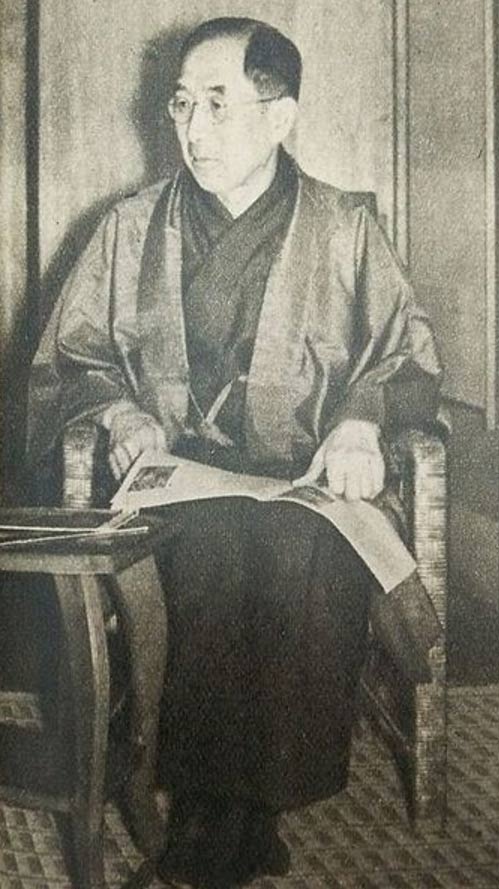The Honjo Masamune is a sword that was forged by the renowned Japanese swordsmith, Goro Nyudo Masamune. This samurai sword is one of the most famous swords in Japanese history, and at one point of time, it even became one of the country’s national treasures. After the end of the Second World War, however, this renowned samurai sword disappeared, and its whereabouts remains a mystery, even today.
The Tale of Masamune and Muramasa
Masamune is often regarded as one of Japan’s greatest swordsmiths. While it is unknown when exactly the swordsmith lived and died, it is traditionally believed that he was making most of his swords during the late 13th century AD and the early part of the following century.
Masamune’s character is best seen in a story of Masamune and Muramasa. This tale, which is quite unlikely to have actually taken place, is about a competition between the two swordsmiths to determine which of them was the greater sword-maker.
There are many versions of this tale, though all of them point to the more virtuous character of Masamune and his creations. In one account, the completed swords were suspended over the stream to test their quality. Muramasa’s sword sliced everything that came into contact with it.
By contrast, Masamune’s sword only cut the leaves that were floating. Living creatures were repelled from it instead. When Muramasa observed this, he believed that Masamune’s sword was not sharp enough, and thought that he had won. As Muramasa was gloating, a travelling monk came forward to give his verdict.
This monk had been observing this competition between the two men for a while, and decided that the quality of Masamune’s sword was higher than that of Muramasa’s. According to the monk, Muramasa’s sword was an evil and blood-thirsty creation, as it cut things up indiscriminately. By comparison, Masamune’s sword did not kill unnecessarily. Due to the ‘benevolent’ nature of his sword, Masamune was declared as the superior swordsmith.

Masamune sword in the city of Steyr. ( CC BY-SA 3.0 AT )
Origins of the Legendary Samurai Sword
The Honjo Masamune is named after a general by the name of Honjo Shigenaga. This general lived during the 16th and 17th centuries AD and served the Uesugi clan in northern Japan. Shigenaga came to possess this sword after the 4th Battle of Kawanakajima in 1561.
During the battle, the sword had belonged to an enemy general, who challenged Shigenaga to a duel. During the duel, Shigenaga’s enemy succeeded in cleaving the samurai’s helmet in half. In the end, however, Shigenaga emerged victorious, and claimed his enemy’s sword as a prize.

A samurai in armor with his sword in attack position. ( Warpedgalerie /Adobe Stock)
Shigenaga kept the samurai sword for many years before selling it to the Toyotomi clan around the end of the 16th century AD, who were the rulers of Japan at that point of time. After the fall of the Toyotomi, the samurai sword was acquired by Japan’s new shogun, Tokugawa Ieyasu.
The samurai sword became a family treasure, and the symbol of the Tokugawa Dynasty. Hence, the Honjo Masamune was passed down from one shogun to the next. Even after the fall of the Tokugawa Shogunate in 1868, the sword remained within the family’s possession.

Various samurai swords. ( Vit Kovalcik /Adobe Stock)
A Mysterious Disappearance
It is recorded that around the end of the Second World War, the Honjo Masamune was in the possession of Tokugawa Iemasa. Following Japan’s surrender, the Allies demanded that all of the Japanese noble families handed over their collection of swords, perhaps as souvenirs of war.
While many of the nobles were understandably furious at this, Iemasa, who was the President of the House of Peers, decided to set a good example / act as the voice of reason, and handed over his family’s collection of swords. This included the Honjo Masamune. The man alleged to have received this sword was a sergeant by the name of ‘Coldy Bimore’, though there are no records that attest to his existence.

Photo of Iemasa Tokugawa. ( Public Domain )
Thus, the fate of the Honjo Masamune has been a mystery ever since. Nevertheless, there is some hope that the famous samurai sword might one day be found. It has been reported that in 2013, a sword was brought to Kyoto National Museum to be appraised. In the following year, it was established that this was one of Masamune’s swords, specifically one that is known as the Shimazu Masamune.
The last record of this sword’s whereabouts was during 1862, when it was given by Tokugawa Ishige to the imperial family to mark his marriage to Princess Kazunomiya. It is the first Masamune sword that has been identified in roughly 150 years.
Top Image: A samurai with a sword. Source: Lumppini /Adobe Stock
By Ḏḥwty
References
Baseel, C., 2014. Scholars confirm first discovery of Japanese sword from master bladesmith Masamune in 150 years. [Online]
Available at: http://www.japantoday.com/category/arts-culture/view/scholars-confirm-first-discovery-of-japanese-sword-from-master-bladesmith-masamune-in-150-years
Hrala, J., 2015. What Ever Happened to Japan’s Most Famous Samurai Sword?. [Online]
Available at: http://modernnotion.com/what-ever-happened-to-japans-most-famous-samurai-sword/
Johnson, B., 2010. Top 10 Famous & Deadly Swords & Their History. [Online]
Available at: http://www.toptenz.net/top-10-famous-deadly-swords.php
Martial Arts Enterprises, MAE, Inc., 2016. Masamune, Japan’s Greatest Swordsmith. [Online]
Available at: http://www.usadojo.com/articles/Masamune.htm
Willey, N., 2013. 10 Mysterious Swords From Legend And History. [Online]
Available at: http://listverse.com/2013/11/16/10-mysterious-swords-from-legend-and-history/
Yamatosaxon, 2014. The Honjo Masamune: A Lost Japanese Treasure. [Online]
Available at: https://thedailybeagle.net/2014/03/23/the-honjo-masamune-a-lost-japanese-treasure/
Related posts:
Views: 0
 RSS Feed
RSS Feed

















 July 30th, 2020
July 30th, 2020  Awake Goy
Awake Goy  Posted in
Posted in  Tags:
Tags: 
















